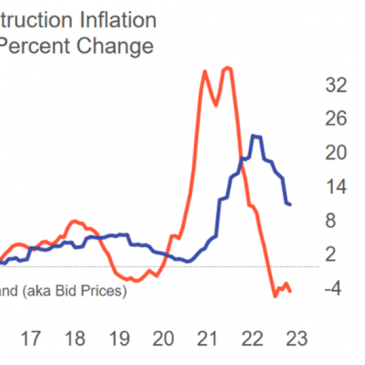The U.S. Bureau of Labor Statistics reported a decline of 0.3% in May for the PPI for final demand, following a 0.2% increase in April and a 0.4% decrease in March. However, on an unadjusted basis, the index rose by 1.1% over the 12 months ending in May.
From a construction perspective, prices for final demand goods decreased by 1.6%, primarily due to a 6.8% drop in energy prices. Industries relying heavily on energy resources can expect reduced expenses during the construction process. Secondly, transportation and warehousing services experienced a decline of 1.4%. This indicates that transportation costs have decreased, which could potentially lead to cost savings in terms of material and equipment delivery for the construction industry.
The construction industry still faces significant challenges related to pricing dynamics. Inflation in non-food, non-energy final demand signals price increases for specific construction materials such as cement, concrete, and plumbing fixtures. This trend is depicted in the graph below. However, it’s worth noting that the lumber industry continues to exhibit a downward trend due to the weak single-family market, and now structural metal and plastic products are also experiencing deflationary pressures.
Also yesterday, the Federal Reserve decided to maintain the federal funds rate in the range of 5 to 5-1/4%, refraining from further rate increases after ten consecutive hikes. This wait-and-see approach is consistent with the theme that core inflation is improving. However, it hasn’t come down quick enough and based on the statement accompanying the decision it seems likely that the Fed will raise rates again – potentially at the July meeting. The Fed emphasized their commitment to monitoring labor market conditions, inflation pressures, and global economic developments, which will play a vital role in shaping future policy decisions.
Regardless of the decision to raise rates in upcoming meetings the Fed is likely near the end of the tightening cycle, with inflation slated to improve in the back half of 2023 as shelter prices work their way into the inflation picture. As interest rates stabilize, they should support some construction projects requiring financing. Additionally, while lower energy and transportation prices may provide some cost relief, potential fluctuations in construction materials might create challenges for project costs – particularly for income properties where the demand challenges are significant.

The post Producer Prices Fall, Fed Holds; What’s Next? appeared first on Dodge Construction Network.
Source: New feed
